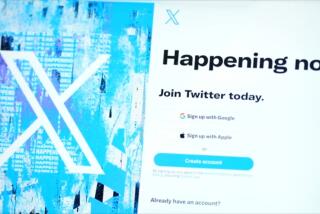New Postal Service Logo Could Cost Up to $7 Million
- Share via
WASHINGTON — The Postal Service, faced with a projected operating deficit of $1.3 billion this year, plans to spend up to $7 million to place a new “corporate” logo on its 39,613 post offices, 178,925 vehicles and millions of mailboxes.
“We need to send a clear signal that we are dedicated to a new level of quality, customer focus and competitiveness,” Postmaster General Marvin T. Runyon said Tuesday as the logo was unveiled for postal employees. “So one of the things we are doing is changing our corporate identity.”
Dubbed “the new bird” by some postal workers and “the new corporate signature” by the agency, the logo features an eagle’s head and beak leaning into the wind alongside blue lettering reading “United States Postal Service.” It was developed at a cost of $100,000 amid much secrecy by a subsidiary of Young & Rubicam, the New York advertising firm that handles the Postal Service’s $60 million advertising account.
The winning design replaces the silhouetted eagle over the words “U.S. Mail” that designer Raymond Loewy created for the government agency in 1970 when it became independent. His eagle has been redesigned twice since then, most recently last year.
“Our new emblem is powerful and dynamic,” Runyon said in a letter to workers. “It is a clean break with our bureaucratic past.”
Officials said the new logo was picked from 300 created by CYB Yashumura Design Inc., a Young & Rubicam subsidiary. It survived 12 focus group reviews in Atlanta, Chicago, San Francisco and Phoenix, plus reviews by postal workers, managers and union representatives, officials said.
In an effort to hold down costs, Runyon directed that the new logo be installed immediately on collection boxes and vehicles only in large metropolitan areas. Elsewhere, in secondary markets, as Brennan called them, the logo will go on trucks and equipment during routine repainting.
Stationery and postal forms will be revised as new supplies are ordered, officials said. “Consequently, the rollout will take up to seven years,” the agency said.
More to Read
Inside the business of entertainment
The Wide Shot brings you news, analysis and insights on everything from streaming wars to production — and what it all means for the future.
You may occasionally receive promotional content from the Los Angeles Times.









